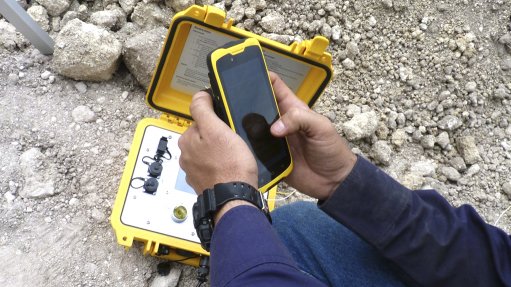
BLOWING UP The use of technology in applications such as blasting at mines has seen an increase in safety and blast accuracy
Mining explosives and blasting technology supplier BME, a member of diversified chemicals group Omnia, tells Mining Weekly it has achieved a record-low recordable case rate of 0.05% in the blasting sector for the last financial year.
A recordable case rate is a well-established measure of safety in the workplace, calculated from the number of safety incidents in relation to the total number of employees.
BME safety, health, environment, risk and quality GM Ramesh Dhoorgapersadh attributes this success to the company’s continuously improving its technology for greater mine safety and productivity.
“This places BME among the ranks of the best safety performers in the local industry,” he adds.
The most prominent of BME’s developing technologies is its Blast Alliance™ portfolio of digital technologies, which facilitates the journey to smart mining and higher productivity through the improved monitoring and control of all systems.
“New digital technologies are making a range of on-mine processes more effective through these improvements,” says BME Southern African Development Community MD Ralf Hennecke.
This often involves the generating and analysis of Big Data, leading to real-time information that operators and management can use for better decision-making.
“Mines are rapidly adopting technologies to help streamline operations for greater efficiency while driving down their carbon footprint.”
Companies are looking to supply partners to do the same, and factors driving this trend include global competitiveness, environmental compliance and best practice, adds Hennecke.
Blasting Energy Use
Hennecke says the key aim of a quality blast is to enhance fragmentation, which, in turn, reduces the energy that BME’s mining customers use in loading, crushing and milling the ore.
He adds that the lower energy demand can significantly reduce the carbon footprint of a mine, thereby improving its sustainability rating.
Further, aligning with the Omnia group’s broader vision, BME has a forward-facing strategy and is always seeking to strengthen its portfolio through ongoing research and development.
“This ensures that innovative technology will continue to drive this sustainable business model into the future,” Hennecke enthuses.
BME has consequently, over the years, invested in a used-oil initiative, with the company constantly searching for new suppliers of used oil to remove this potential contaminant from the environment.
“We are also planning the exciting launch of the next‑generation AXXIS electronic initiation system by year-end,” he comments.
Explosives Technology
BME blasting science global manager Scott Scovira says the drive to raise productivity at mines increasingly relies on technological innovation.
Mining sustainability can also be enhanced considerably using quality blasting.
Mines can achieve optimal rock fragmentation to make their loading and comminution functions more economical using BME’s powerful Blastmap blast design software, he adds.
BME also offers its technical services through an online platform; working remotely in this way further reduces a mine’s carbon footprint, negating the need for staff to travel to and from the mine.
Meanwhile, BME’s Blasting Guide mobile application, launched earlier this year as part of its continuous innovation for customers, leverages digital technology to enable users to rapidly calculate and check blast designs.
Enhanced safety is a constant consideration in the development of all of BME’s products and services to ensure the safe and efficient use of explosives in the field, says Scovira.
“We make extensive use of electronic – rather than electric or nonelectric – detonators for firing blastholes.”
Electric detonators have the safety concern of being susceptible to extraneous electricity, while nonelectric detonators do not have a detonator circuit-testing capability and rely on the user to make connections that are 100% correct to prevent misfires.
“By contrast, electronic detonators are inherently safe from extraneous electricity, except lightning, and every detonator in the blasting circuit may be checked for functionality before firing, thereby reducing the risk of misfires,” he enthuses.
In comparison to other hazardous occupations, BME’s field blasting professionals have an excellent long-term safety record.
They have also adapted well to modern demands – such as the encroachment of settlements close to blasting sites such as quarries – by minimising the risk of flyrock.
Scovira concludes that, with the assistance of specialist technology providers, such as BME, quarries and mines can employ specialised electronic and software tools that allow for the field measurement of blast hole deviations and the measurement of the amount of rock in front of blast holes.